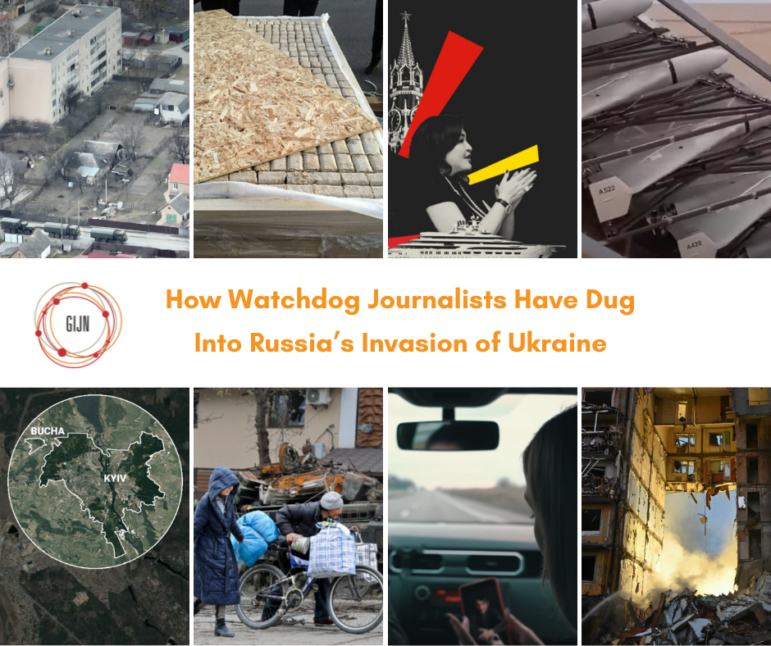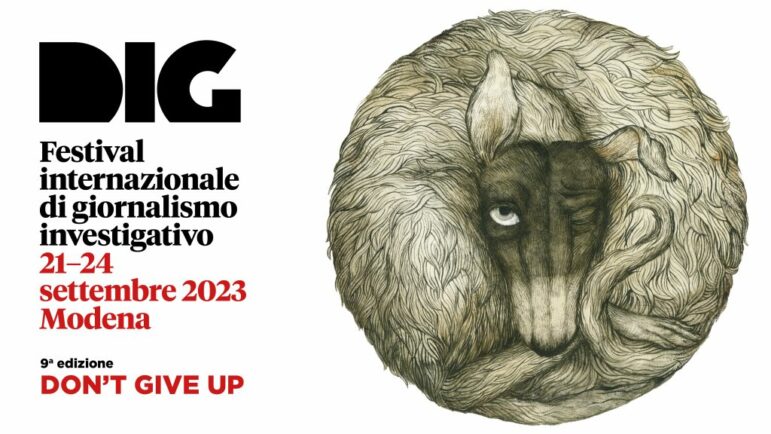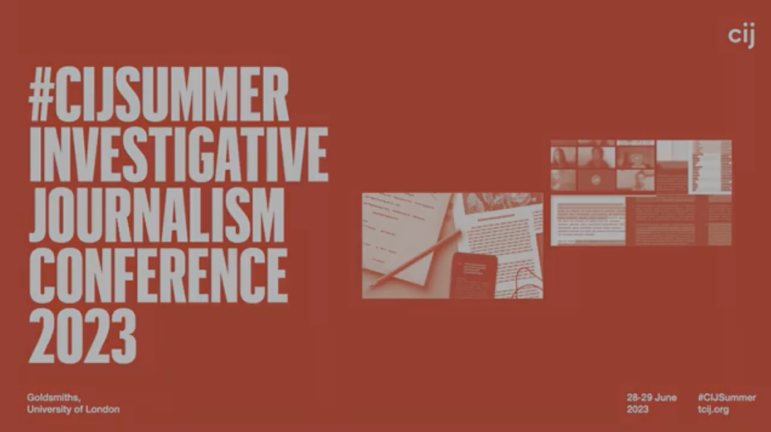

One Year of War: How Watchdog Journalists Have Dug Into Russia’s Invasion of Ukraine
Read this article in
In the 12 months since Russia invaded Ukraine, investigative journalists have navigated enormous reporting challenges and personal risks to expose everything from war crimes and sanctions busting to hidden oligarch loot and Russian “filtration” camps.
Many of the strongest investigations have been generated by reporters working in tough press environments further complicated by the war itself — journalists based in Ukraine, and Belarus, and Russian reporters forced into exile.
In addition to the use of a wide range of sources, such as trade databases, satellite imagery, and witness interviews, much of the evidence gathered relied on social media search — especially, on the Telegram and VK platforms — and some involved undercover reporting. In some cases, reporters risked artillery fire and possible minefields to gather evidence in newly liberated Ukrainian towns.
One striking phenomenon of the occupation has been Russian soldiers unwittingly filming evidence of their own abuses — sometimes using stolen Ukrainian smartphones — with reporters using this imagery to expose war crimes, including the units and individuals behind them. Another notable feature has been the use of strong explanatory journalism. This was showcased, for instance, in how data site Texty.org.ua explained the dynamics of illicit exports from Ukrainian ports, and briefed readers on what they knew, and did not know, about grain theft and smuggling by Russia.
While scores of excellent investigations have been produced on the war, we have curated below a list of ten notable stories that reflect innovative digging techniques, impactful revelations, and the diversity of topics that journalists tackled.
The Russian Military Unit That Killed Dozens in Bucha
In an eight month-long project, The New York Times visual forensics unit documented war crimes that took place in the first week of March 2022 in the town of Bucha, and also identified the Russian unit and individual soldiers allegedly behind the atrocities. The team obtained and analyzed thousands of hours of phone, drone, and street camera footage from Bucha — focusing on dozens of civilian killings along one road, Yablunska Street. Having identified the involvement of Russia’s 234th Regiment from visual evidence, the Times used particularly innovative techniques to verify this finding. For instance: having learned that Russian soldiers made personal calls from phones stolen off of two executed Ukrainian men — within hours of the killings — the journalists obtained call logs revealing they had dialed phone numbers in Russia. They then traced these numbers to social media accounts, which further linked them to insignia and members of the 234th Regiment. They also identified three unit commanders from their radio codes — as well as audio of one soldier complaining that his commander gave orders to “fuck up all those civilians.”
Traders Are Sneaking Banned Russian and Belarusian Wood into the EU by Pretending It’s from Central Asia
In the past year, investigative outlets have not only uncovered sanctions evasion schemes by the governments of Russia and its ally Belarus, but also unearthed a brazen new network of sanctions-busting private companies, which sometimes openly offer to fabricate export documents. In this piece — an investigation by two GIJN member organizations — the Belarusian Investigative Center (BIC) and Lithuanian cross-border outlet Siena — found that European Union imports of timber from the sparsely forested Central Asion nations Kazakhstan and Kyrgyzstan had leapt from less than $500,000 in all of 2021 to over $32 million during just a few months in 2022.
With coordination from the Organized Crime and Corruption Reporting Project (OCCRP), the teams found that many of the shipments behind this surge actually involved sanctioned wood from Belarus and Russia, and that it was passing EU customs inspections thanks to faked documentation. In addition to using customs sources and trade databases like Eurostat, reporters at BIC and Siena identified the sanctions busters by posing as Belarusian timber sellers. Reporters in Belarus also found that one certification company had launched a new service to generate misleading paperwork, which then pointed the team to a complex network of intermediaries and accomplices in Kyrgyzstan.
Oligarch Asset Tracking Projects
The Russian invasion sparked a race to find, freeze, and seize global assets owned by oligarch supporters of Vladimir Putin’s regime. But Western governments quickly encountered a web of offshore shell companies, proxy ownership schemes, secret financial networks, and enabling services designed to shield this wealth. In a remarkable, collaborative effort to follow tainted money through this tangled world, OCCRP built an open, interactive Asset Tracker database that identifies and details more than US$17 billion in financial and physical assets. The project also includes numerous investigative stories that unearthed camouflaged offshore wealth held by individual Putin allies, including one exposé that cleverly revealed carefully hidden Austrian assets controlled by the head of a Russian state bank. OCCRP journalists also revealed frantic efforts by sanctioned oligarchs to hide and stash their jets and yachts in 2022, and they also published a practical guide to help other reporters join the hunt.
Meanwhile, the International Consortium of Investigative Journalists (ICIJ) found that it had a running start in this oligarch asset digging thanks to its existing databases of leaked financial data, such as the Panama Papers and the FinCEN Files — resources that also assisted OCCRP’s Asset Tracker project. Many months after the invasion, ICIJ published a series that showed how, and why, sanctions were expanded beyond oligarchs to also scrutinize their enabling Western financial service providers. Other reporters even found hidden Russian oligarch wealth inside Ukraine itself — as documented by this piece from Radio Svoboda, the Ukrainian service of Radio Liberty/Radio Free Europe. Radio Svoboda’s Schemes investigative unit which dug into Russian billionaire ownership of major companies in Ukraine.
What Damage Has Russia Inflicted on Ukraine and Its Citizens?
Given the chaos of war, the rarity of reliable facts, and the menace of disinformation campaigns — as well as the threat of audience fatigue — contextual, data-driven “big picture” stories are important to mark milestones in protracted conflicts. Produced by exiled Russian investigative outlet IStories, this piece represented an effort to tabulate the damage caused by Russian forces in the first 10 months of the war. The story sets out the most reliable estimates of civilian deaths and damage to civilian infrastructure in Ukraine, and also highlights disturbing, credible reports of war crimes and widespread sexual assaults. The investigation also undertakes a look into the flip-side of the war’s costs — in “blood-and-treasure” suffered by Russia, as well as the number of detentions of Russian anti-war protesters.
Stolen Ukrainian Grain Exported by Russia Through ‘Gray Freights’

Using satellite imagery from Planet Inc., Texty identified masses of train cars (red) trucks (blue), and freight ships (green), possibly smuggling stolen grain out of Ukraine by Russia. Image: Screenshot, Texty via Planet Inc.
Despite the inherent challenges of tracking commodities exports from war zones, several investigative outlets have documented Russia’s widespread theft, laundering, and smuggling of grain from occupied regions of Ukraine. In this piece — one of several in a series — independent Ukrainian data newsroom Texty.org.ua showed how new, quiet export deals and “gray freights” — shipping without a listed destination — helped to loot food and revenue from the occupied region. While carefully qualifying their findings, the team combined ship traffic databases and expert sources with graphs and satellite imagery — including evidence of the “crowding of freight trucks” — to show how Russia has likely moved hundreds of thousands of tons of Ukrainian grain through ports like Sevastopol to friendly countries.
War Crimes in Andriyivka
Investigative journalists have been especially effective in finding evidence of war crimes from comments made, and footage taken, by the perpetrators themselves. After the eastern Ukrainian village of Andriyivka was liberated, one resident found a smartphone that had been stolen from her family, and later discarded, by a 21-year-old Russian soldier. While browsing for images of her grandchildren, the resident instead came across a series of selfies of the soldier and his comrades. With help from this woman — as well as facial recognition software and social media search — investigative outlet Slidstvo.info geolocated the photos and used them to identify individual soldiers allegedly connected to crimes in the town. In a stunning parallel investigation, a reporter at IStories, Ekaterina Fomina, secured an extraordinary video interview with the same soldier who took the phone — a man who openly confessed to his part in killing several civilians, and who blamed his superiors for the death toll among both civilians and his fellow soldiers.
Shahed Operators: Russian-Iranian Tale of ‘Falcon Hunt’
Attacks by Iranian-made kamikaze drones became a major feature of Russia’s war strategy in the past six months of the war, as Moscow began to favor more remote, low-cost tactics designed to degrade Ukrainian infrastructure and target civilians. But how did Russian UAV operators learn how to use those drones so quickly — and who exactly are these operators? In an innovative and ambitious investigative project, GIJN member Nashi Groshi.Lviv — an independent Ukrainian newsroom that focuses on public procurement — found ties between the drone strikes and a Russian “Falcon Hunt” war games competition that, for the first time, was organized by Iran in August 2022. In addition to finding training components associated with the tournament, the team also identified four Russian competitors in Iran that are allegedly also active servicemen in an Unmanned Aviation division of Russia’s armed forces. The outlet also created a video version of the story, with English captions, in cooperation with another GIJN member, Slidstvo.Info.
The Banality of Brutality: 33 Days Under Siege in Block 17, Bucha, Ukraine
Under conflict conditions, investigative reporting techniques are sometimes the only way of telling the story of how civilians experience and survive military occupation. In this innovative “scrollytelling” piece, OCCRP and its Ukrainian partner Slidstvo.Info used logs from a Telegram channel to paint a deeply revealing picture of how civilians in a single apartment building experienced more than a month of brutal Russian occupation in the town of Bucha. With the aid of visualizations and satellite imagery, the piece revealed the terror and fortitude of dozens of residents in “Block 17.” The story laid bare the real-time thoughts and fears of ordinary people in extreme circumstances — worries not only about Russian bullets, but also about collaborators, food, and irresponsible behavior among neighbors – and offered an alternate canvas for the power of watchdog reporting.
How Ukrainian Civilians Are Being Relocated to Russia via Mass ‘Filtration Camps’
In a major investigative series on “Russian filtration camps,” the independent UK-based outlet, inews (“i”), has closely tracked Russia’s relocation of residents from Ukraine’s occupied eastern cities. In one piece from May, investigative reporter Dean Kirby presented evidence that thousands of survivors from the besieged Ukrainian city of Mariupol had been relocated to 66 camps across Russia — from former schools and hospitals to children’s wilderness camps. While in theory these Ukrainians are free to leave, sources indicated that most of these deportees are effectively stranded in a bizarre re-population scheme seemingly driven by ideological and labor demands. The story also suggested that an underground Russian network has emerged to help people escape the camps, and the country. The investigation was based on an exhaustive analysis of local Russian reports, Russian mapping sites, and human sources. Since then, journalists have also used satellite imagery to discover shocking damage, new Russian military facilities, and mass grave sites in Mariupol itself.
Notes Under the Cherry Tree
More than 1,000 residents of the eastern city of Izium were abducted and killed by invading Russian forces, according to Ukrainian authorities — including hundreds found in mass graves. One of those victims was a revered children’s author, Vladimir Vakulenko, whose murder has come to symbolize Vladimir Putin’s attack on Ukraine’s culture. In this harrowing documentary, an investigative team from Ukrainian broadcaster Suspilne set out to find out what happened to Vakulenko, and to his body. The film reveals how the celebrated writer kept a war diary for the first month of the occupation — and then buried it under a cherry tree in his backyard, just hours before he and his young disabled son were abducted by Russian forces. Guided by witnesses, the investigative team’s journey unearthed key facts about Vakulenko’s torture and murder, while providing disturbing insights into the conditions in which other civilians were detained in the region. Meanwhile, excerpts from the diary provide a poetic — and often prophetic — backdrop to the documentary, and serve to underscore Vakulenko’s brave and determined patriotism.
Additional Resources
Bellingcat’s Grozev on Investigating Russia’s Invasion of Ukraine
Journalism Resources for Tracking Events in Ukraine
Investigating Russia and the War in Ukraine
 Rowan Philp is GIJN’s senior reporter. He was formerly chief reporter for South Africa’s Sunday Times. As a foreign correspondent, he has reported on news, politics, corruption, and conflict from more than two dozen countries around the world.
Rowan Philp is GIJN’s senior reporter. He was formerly chief reporter for South Africa’s Sunday Times. As a foreign correspondent, he has reported on news, politics, corruption, and conflict from more than two dozen countries around the world.

















